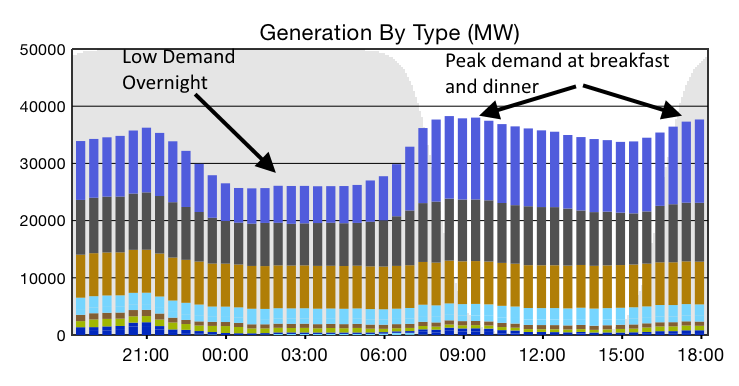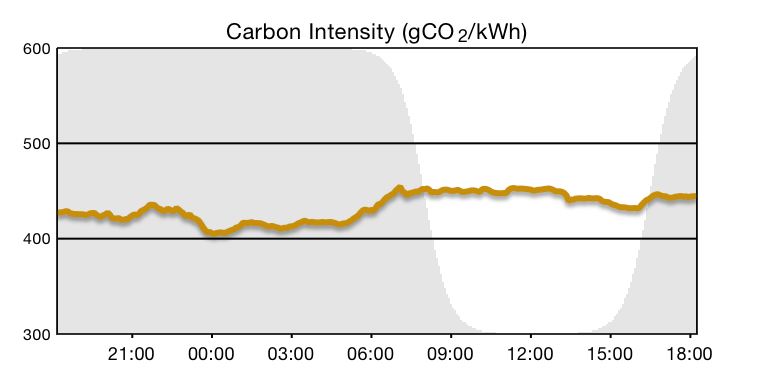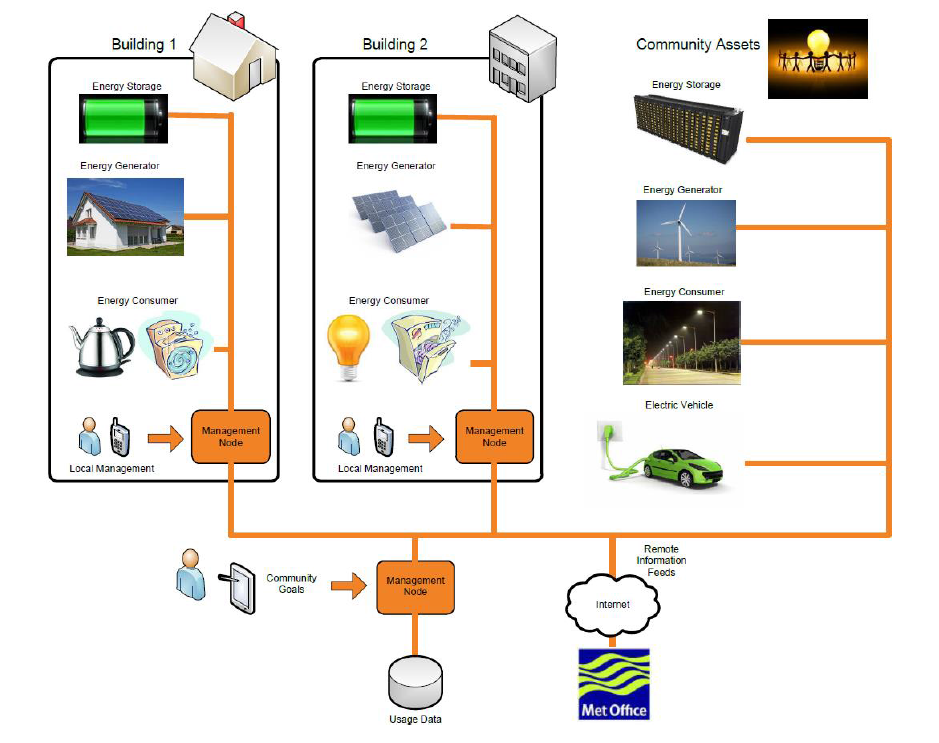BWCE and Transition Community Corsham are involved in a project to see how domestic and small scale micro-renewable electricity generation can be integrated with battery storage and automated control of appliances to lower carbon footprints by time-shifting demand.
Background: the reason for time shifting demand
Electricity demand varies throughout the day:

with peak demand on the national grid occurring around breakfast time and in the evening from dinner time. In order to supply demand at this time highly carbon intensive coal (900g CO2e/kWh) and gas (600g CO2e/kWh) power stations need to be switched on which significantly increases the carbon intensity of the national grid:

which in this example (20 Apr 2015) has increased by 10% from 400g CO2e/kWh to 450g CO2e/kWh. If a coal power station supplies this additional demand marginal carbon intensity can be as high as 900g CO2e/kWh. Demand from domestic appliances like washing machines and dishwashers can be shifted in combination with local battery storage it should be possible to reduce peak demand and therefore reduce the overall carbon intensity of the national grid and also reduce the need to build more fossil fuel based power stations. Reducing the need to build additional power stations will reduce electricity costs for everyone and shifting demand will reduce costs to individual households.
The project: run a trial to see how this demand shifting might work
The £560,000 Technology Strategy Board funded project is trialling technology to shift demand at 10 homes, one office and a school in Corsham:

The schematic of the system shows how local renewable generation (at the moment, solar PV, but could be extended to other renewables such as wind, in the future), local battery technology and control of household appliances can be used to temporarily shift supply and demand such that peak demand and carbon intensities are reduced.
This will be achieved by maximising the use of electricity generated from intermittent renewable sources and reducing the traditional peaks in electricity between 4-8pm when energy costs and carbon intensity are at their highest. This can be achieved through:
- Storing energy: when it is being generated by solar PV for later in the day (energy can be stored in batteries)
- Matching supply with demand by shifting electricity loads (washing machines, tumble dryers and dishwashers) to times when renewable generation is highest.
The project is being run by e2E Services in combination with Encraft Ltd, Nottingham University, and BWCE. Results and conclusions of the project should be known in 6 months’ time.